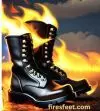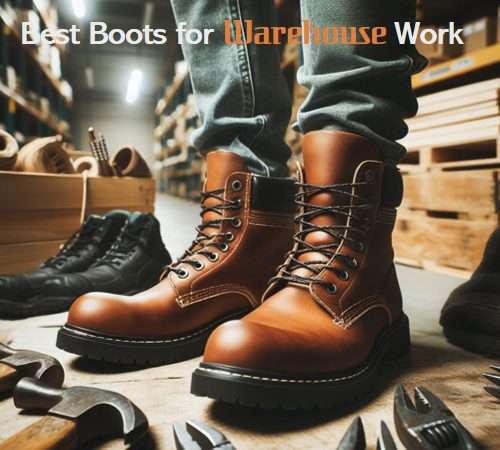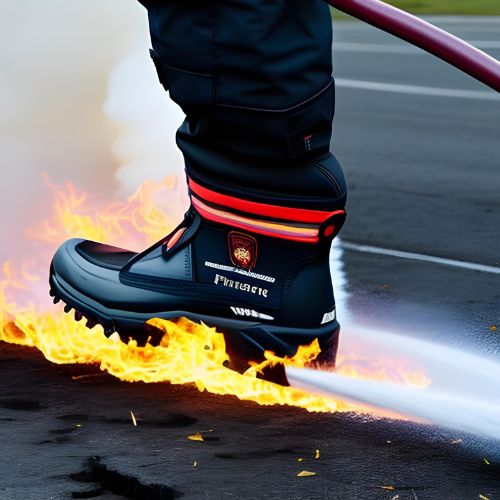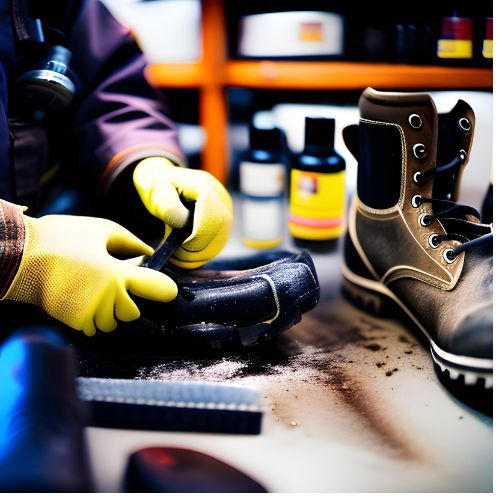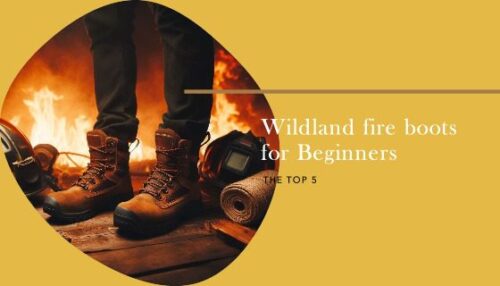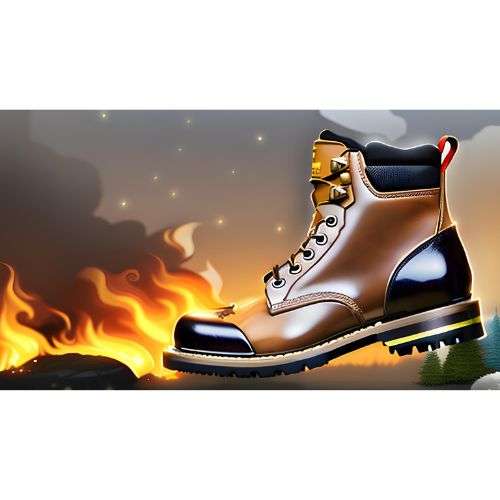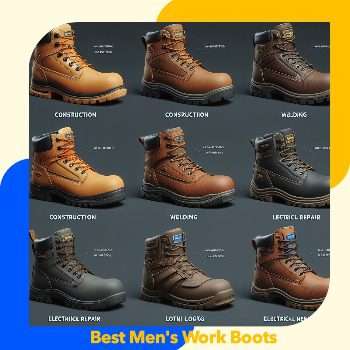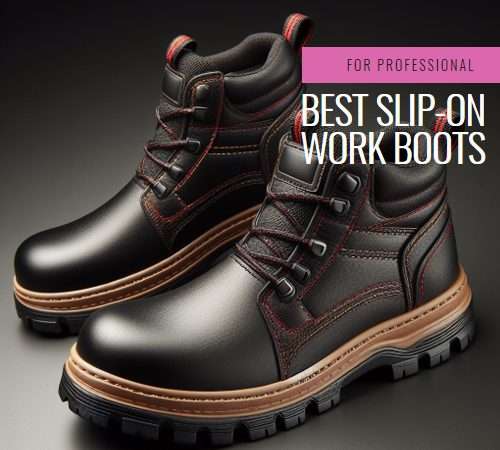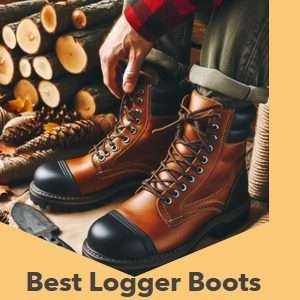Working in a warehouse can be strenuous on your feet. You must walk, stand, lift, and move for lengthy periods of time, typically on rough and uneven surfaces. You require boots that are not only comfortable, robust, and protective, but also fashionable and inexpensive. But how do you select the greatest warehouse boots? What characteristics should you look for? What are the most popular and dependable brands and models? We’ll answer all of these questions and more in this blog article. We’ll teach you how to pick the best warehouse boots for your own preferences, budget, and job environment. We’ll also give you some pointers on how to care for and maintain your boots. By the end of this post, you will have a clear idea of what kind of boots you need and where to get them.
Table of Contents
ToggleWhy Do You Need the Best Boots for Warehouse Work?
Working in a warehouse can be detrimental to your feet. You are vulnerable to a variety of risks, including:
- Falling and slipping on damp or slick floors.
- Injuries caused by sharp or heavy things.
- Getting foot problems like blisters, corns, calluses, bunions, or plantar fasciitis.
- Tiredness, soreness, or swelling in your feet, ankles, knees, hips, or back?
To avoid these problems, you must wear the best warehouse boots. The best warehouse boots will give you with:
- Comfort: The best warehouse boots will fit your feet snugly, provide adequate cushioning and support, and let your feet breathe and keep dry.
- Durability: The best boots for warehouse work will last for a long time, resist wear and tear, and withstand harsh conditions.
- Protection: The best boots for warehouse work will protect your feet from impact, puncture, heat, cold, water, chemicals, and electric shocks.
- Style: The best boots for warehouse work will also look good, match your outfit, and suit your personality.
How to Choose the best Boots for Warehouse Work?
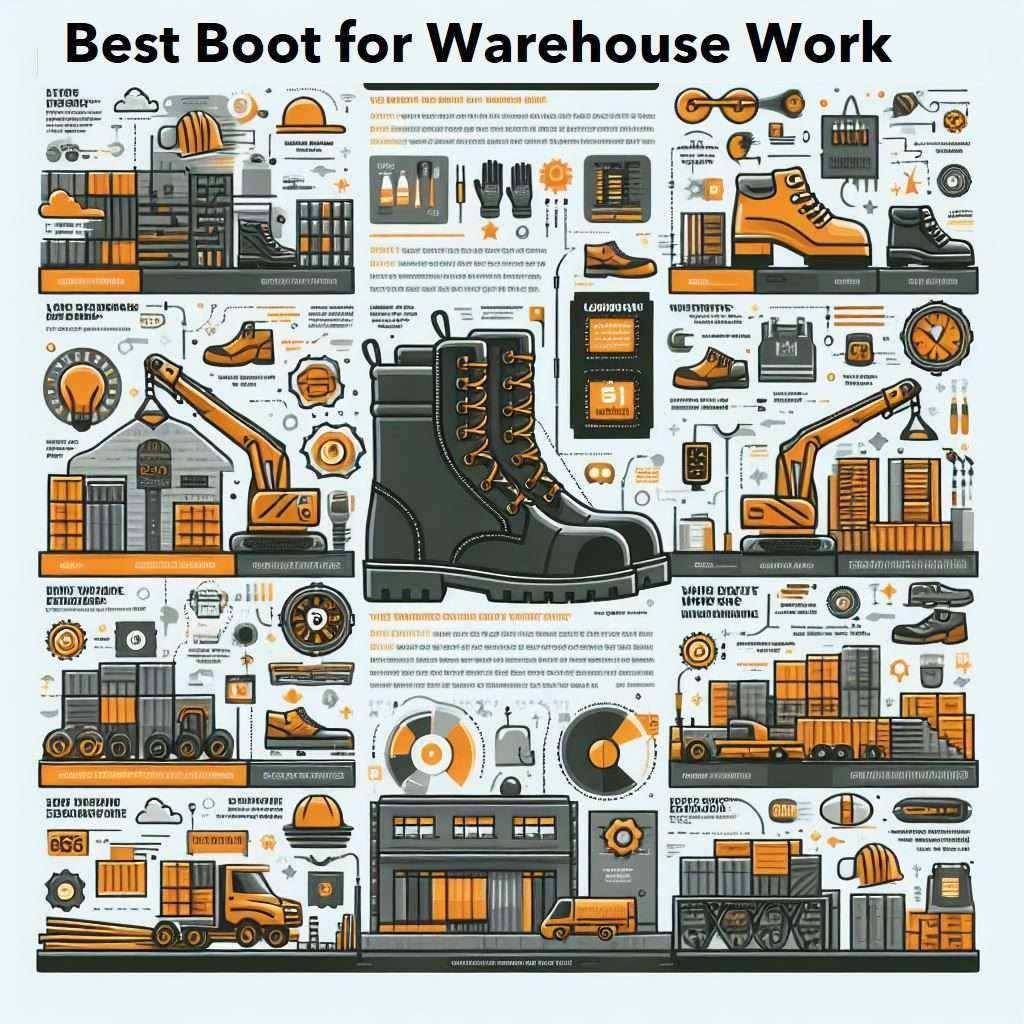 Choosing the best warehouse boots might be difficult due to the numerous elements to consider. Here are a few of the most important:
Choosing the best warehouse boots might be difficult due to the numerous elements to consider. Here are a few of the most important:Size and fit:
Material and Construction:
- Leather: Leather is a naturally tough, pleasant, and adaptable material. It can be treated to be water, stain, and abrasion-resistant. It can also be dyed in a variety of colors and fashions. Leather boots are typically stitched or welted, which means that threads or strips of leather connect the upper and sole. As a result, they are more robust and repairable than glued boots.
- Synthetic: Synthetics are man-made materials that are less expensive, lighter, and easier to maintain than leather. They can also withstand more water, chemicals, and heat. They are, however, less breathable, less comfortable, and less durable than leather. Synthetic boots are typically bonded, which implies that adhesives hold the upper and sole together. This makes them less durable and repairable than stitched or welted boots.
Sole and Heel:
- Rubber: Rubber is a natural substance that is flexible, long-lasting, and sticky. It can also be blended with other materials to improve its characteristics, such as carbon. Rubber soles and heels provide traction and cushioning on wet, oily, or uneven surfaces. They can, however, be heavy, bulky, and prone to cracking or melting.
- Polyurethane: Polyurethane is a synthetic material that is light, resilient, and resistant to abrasion, oil, and chemicals. It can also be molded to different shapes and densities, to suit different needs. Polyurethane soles and heels are good for hard, flat, or smooth surfaces, as they provide support and shock absorption. However, they can also be slippery, stiff, and prone to splitting or crumbling.
Toe and ankle:
- Steel toe: Steel toe boots include a steel cap in the toe area to protect your toes from impact and compression. Steel toe boots are the most robust and protective sort of toe, but they can also be heavy, chilly, and uncomfortable.
- Composite toe: Composite toe boots contain a non-metallic cap in the toe area that protects your toes from impact and compression. Composite-toe boots are lighter, warmer, and more comfortable than steel-toe boots, but they can also be less protective and durable.
- Soft toe: Because soft-toe boots lack a toe cap, they provide little protection for your toes. Soft-toe boots are the lightest, most comfortable, and most flexible type of toe, but they are also the most dangerous and therefore inappropriate for warehouse work.
- High Ankle: High-ankle boots have a shaft that covers your ankle and part of your lower leg, providing ankle support and stability high-ankle boots are ideal for uneven or difficult terrain because they protect the ankles from sprains and twists. They can, however, be hot, constricting, and difficult to put on and take off.
- Low ankle: Low ankle boots have a shaft that ends below your ankle, which allows more freedom and mobility for your ankle. Low ankle boots are good for flat or smooth terrain, as they are cooler, lighter, and easier to wear and remove. However, they can also be less supportive and stable for your ankle.
The Best Boots for Warehouse Work in 2024
Thorogood American Heritage Work Boots:
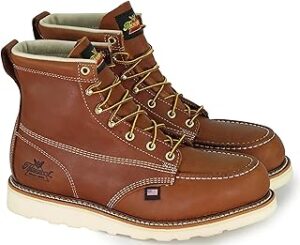 Made of 100% leather, these boots have a steel toe, a wedge sole, and a lace-up fastening. They are comfortable, long-lasting, and come in a variety of colors and sizes. They are also evaluated for electrical safety and have a strong reputation among warehouse workers.
Made of 100% leather, these boots have a steel toe, a wedge sole, and a lace-up fastening. They are comfortable, long-lasting, and come in a variety of colors and sizes. They are also evaluated for electrical safety and have a strong reputation among warehouse workers.Chicago KEEN Utility 6-Inch Waterproof With Carbon Toe:
 These boots contain a carbon toe, a rubber sole, and a lace-up fastening. They are breathable, light, and protective, and come in a variety of colors and sizes. They are also waterproof, slip-resistant, and well-liked among warehouse workers.
These boots contain a carbon toe, a rubber sole, and a lace-up fastening. They are breathable, light, and protective, and come in a variety of colors and sizes. They are also waterproof, slip-resistant, and well-liked among warehouse workers.Caterpillar Second Shift Steel-Toe Work Boot:
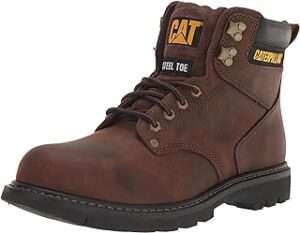 These boots are made of leather and have a steel toe, a rubber sole, and a lace-up closure. They are stylish, durable, and protective, and they come in various colors and sizes. They are also affordable, oil-resistant, and have a good review among warehouse workers.
These boots are made of leather and have a steel toe, a rubber sole, and a lace-up closure. They are stylish, durable, and protective, and they come in various colors and sizes. They are also affordable, oil-resistant, and have a good review among warehouse workers.Merrell Moab Vertex Mid Waterproof Comp Toe Work Boot:
 Made of leather and mesh, these boots have a composite toe, a rubber sole, and a lace-up closure. They are waterproof, comfy, and protective, and they are available in a variety of colors and sizes. They are also shock-absorbing, flexible, and popular among warehouse workers.
Made of leather and mesh, these boots have a composite toe, a rubber sole, and a lace-up closure. They are waterproof, comfy, and protective, and they are available in a variety of colors and sizes. They are also shock-absorbing, flexible, and popular among warehouse workers.Wolverine Floorhand Work Boot:
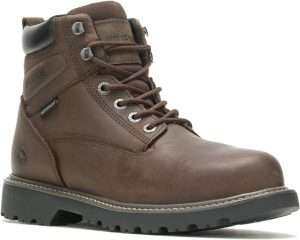 These leather boots include a cushioned toe, a rubber sole, and a pull-on fastening. They are long-lasting, comfy, and versatile, and they come in a variety of colors and sizes. They are also water-resistant, slip-resistant, and well-liked by warehouse workers.
These leather boots include a cushioned toe, a rubber sole, and a pull-on fastening. They are long-lasting, comfy, and versatile, and they come in a variety of colors and sizes. They are also water-resistant, slip-resistant, and well-liked by warehouse workers.Best Boots for Warehouse Work Women’s
Skechers for Work Women’s Workshire Peril Steel Toe Boot:
Caterpillar Women’s Echo Waterproof Steel Toe Work Boot:
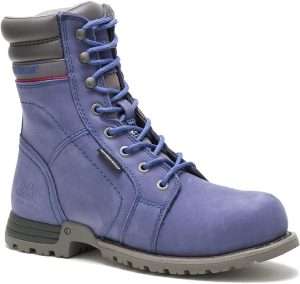 Made of leather, these boots have a rubber sole, a steel toe, a waterproof membrane, and a lace-up fastening. They are long-lasting, water-resistant, and protective, and they are available in a variety of colors and sizes. They are also reasonably priced and have a positive reputation among warehouse workers.
Made of leather, these boots have a rubber sole, a steel toe, a waterproof membrane, and a lace-up fastening. They are long-lasting, water-resistant, and protective, and they are available in a variety of colors and sizes. They are also reasonably priced and have a positive reputation among warehouse workers.Timberland PRO Women’s Direct Attach 6″ Steel Toe Waterproof Insulated Industrial & Construction Shoe:
Best Boots for Warehouse Work Men’s
Timberland PRO Men’s Pit Boss 6-Inch Steel Safety Toe Industrial Work Boot:
KEEN Utility Men’s Chicago 6-Inch Waterproof with Carbon Toe:
Caterpillar Men’s Second Shift Steel Toe Work Boot:
How to Care for Your Boots and Keep Them in Good Shape
Regularly clean your boots:
Condition your boots occasionally:
Periodically polish your boots:
Properly store your boots to avoid fading or cracking:
Best Boots for Warehouse Work Reddit:
Best Shoes for Factory Work Reddit:
Best steel toe shoes for warehouse work:
In summary
FAQ
Should I wear boots in a warehouse?
What type of footwear is acceptable in the warehouse?
Which boots are best for work?
What are the essential characteristics of warehouse work boots?
Do jobs in warehouses require steel toe boots?
Is there anything comfy that I can wear for a long day on my feet?
Do women have any particular options when it comes to warehouse work boots?
How do I choose the right size and fit for warehouse boots?
What role do Reddit community insights play while choosing boots?
Can I use my warehouse boots to other types of jobs?
Are there any environmentally friendly warehouse work boot choices available?
In 2024, what patterns should I watch out for when selecting warehouse boots?
How often should I replace my warehouse work boots?
Can I wear reflective vests or other safety gear with boots?
Do warehouse pickers need to wear any particular boots?
What is the benefit of choosing footwear with more ankle support?
Is it easy for me to maintain and clean my warehouse work boots?
Should I prioritize style when choosing warehouse work boots?
Where can I purchase the best boots for warehouse work?
Visit Firesfeet Blog – Your One-Stop Shop for Boot Reviews and Guides!
Here, we empower firefighters with the right boots for their needs. Our collection includes a variety of styles and sizes, guaranteeing the perfect fit for anyone. We take pride in our product quality, ensuring that our boots stand the test of time. With Firesfeet, you can confidently shop for wildland firefighting boots. Visit us today and discover why we are the most trusted source for firefighters looking to take on any challenge wearing firefighting footwear!
Keep yourself safe out there!
#WildlandFirefighters #SafetyFirst #Firesfeet#
